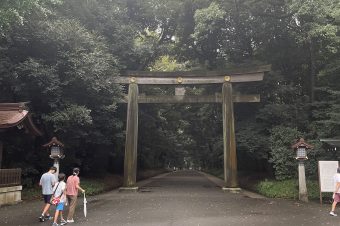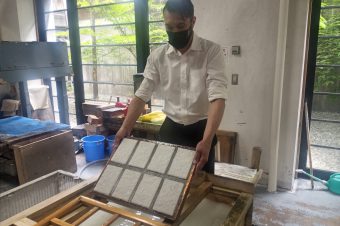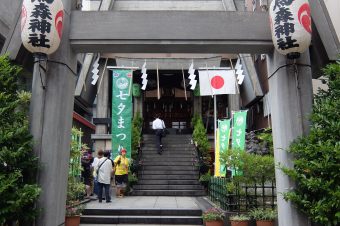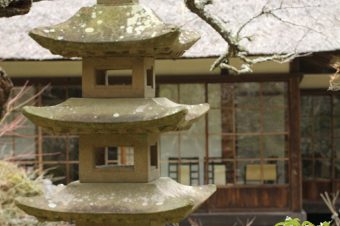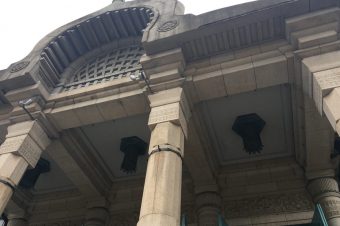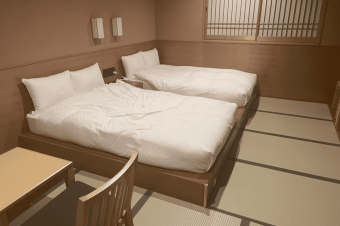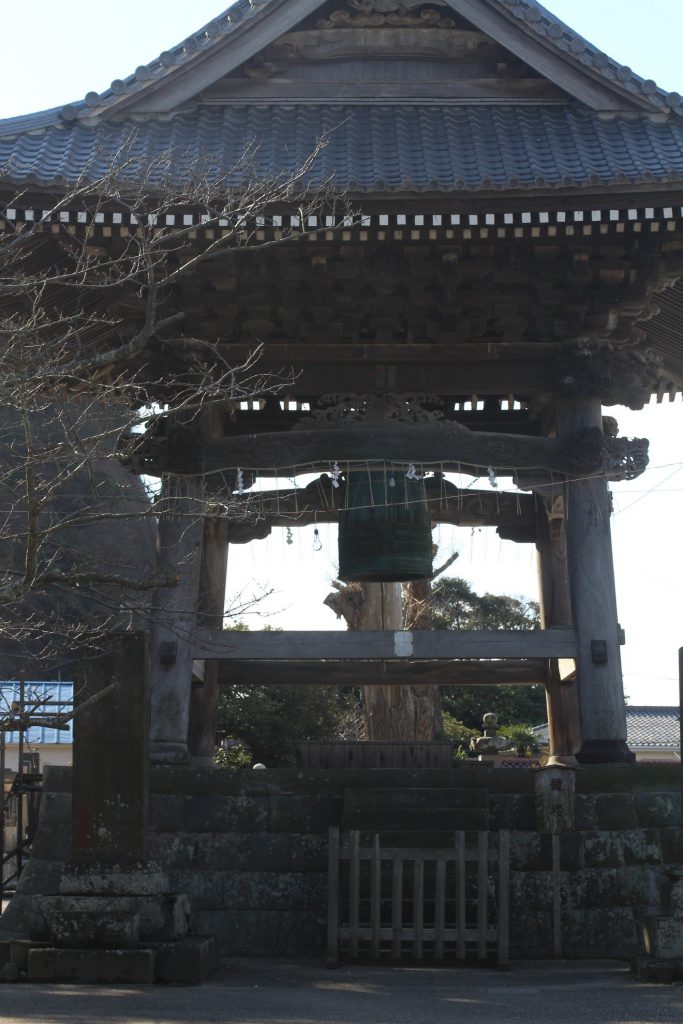
Every morning I wake up to the sound of the Komyoji temple bell. Back in my single days, when I wasn’t sure if I would ever find my life partner, I even made a senryuu (informal haiku) wondering if I would ever hear the bell while lying alongside my wife.
朝の鐘
妻と聞くのは
いつの日か
Which translates to something like:
Morning temple bell
Hear it with my cherished wife
When will that day be
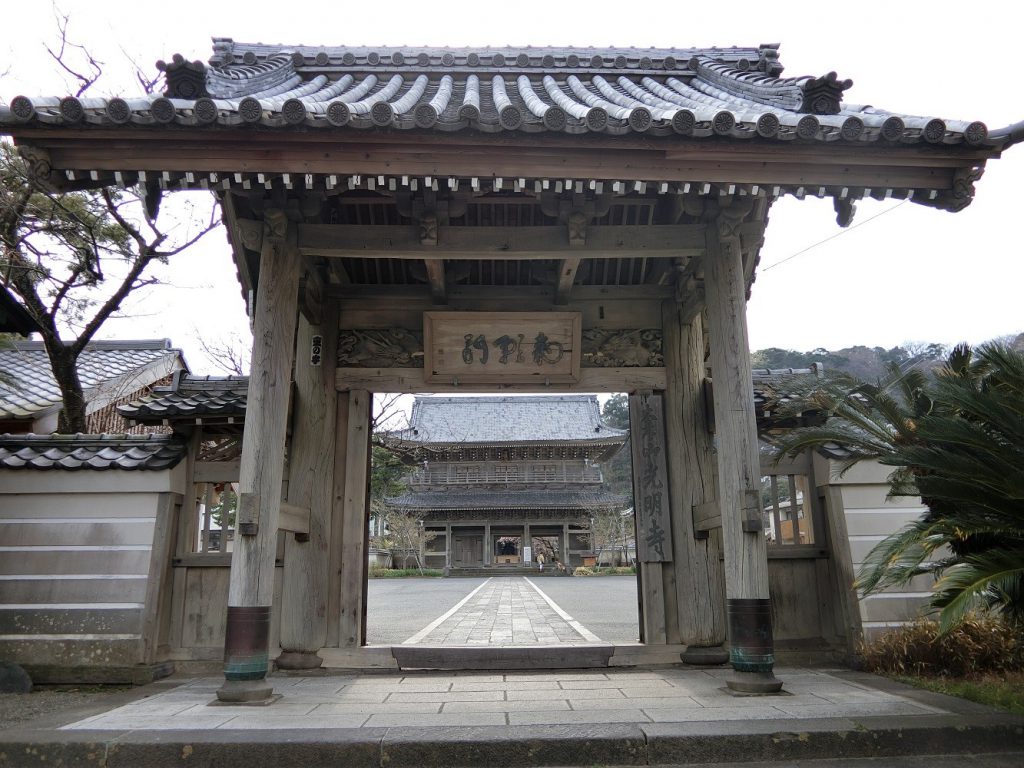
Not only does Komyoji have the distinction of being the only seaside temple in Kamakura (well, I suppose at one time it actually was seaside but now there are two roads and a parking lot between the temple and the beach), during the Tokugawa Shogunate period the temple was the Kanto region’s leading center of Jodo Buddhism learning, being so designated by none other than Shogun Ieyasu Tokugawa himself. The temple still occupies a very high spot in the Jodo hierarchy.
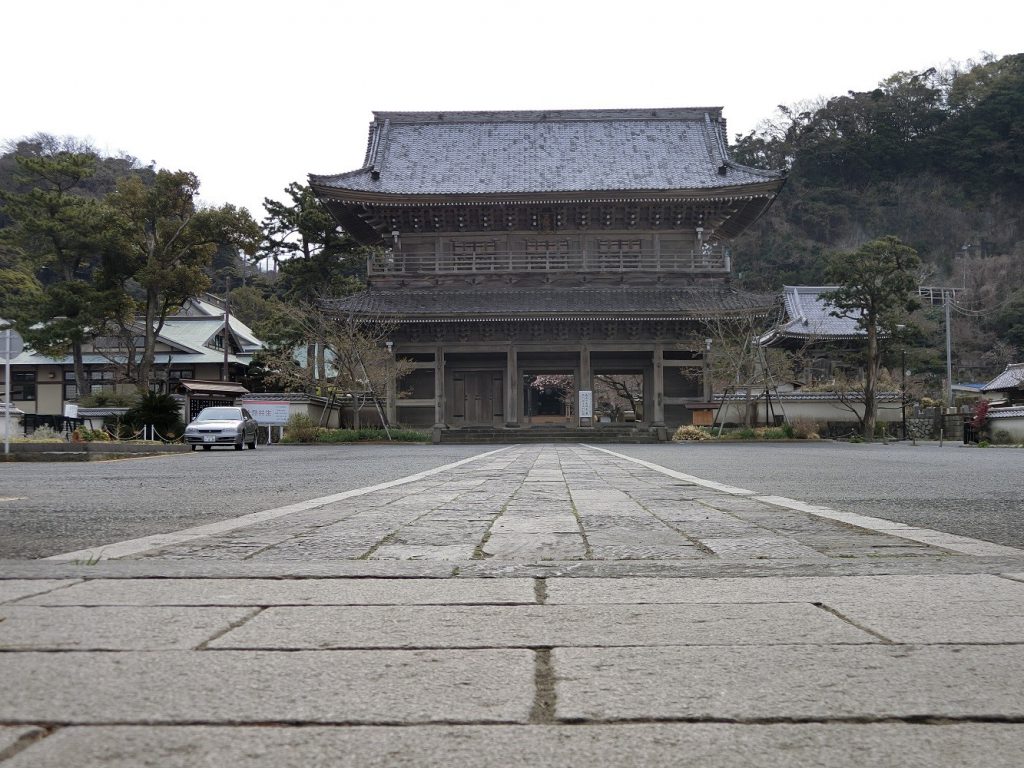
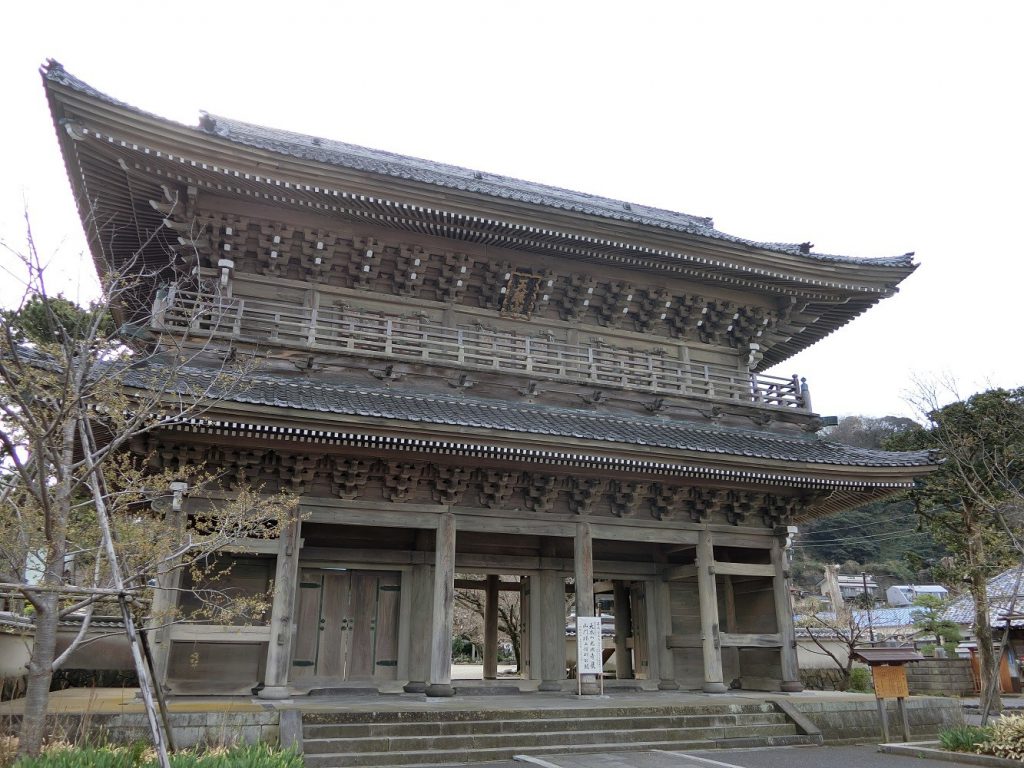
The main gate (and it can function as one) never ceases to awe me. It is massive and one of the most picturesque structures in Kamakura. Of all the pictures I took during my high school photography class, my all-time favorite was one I took of this gate and developed in sepia tone.
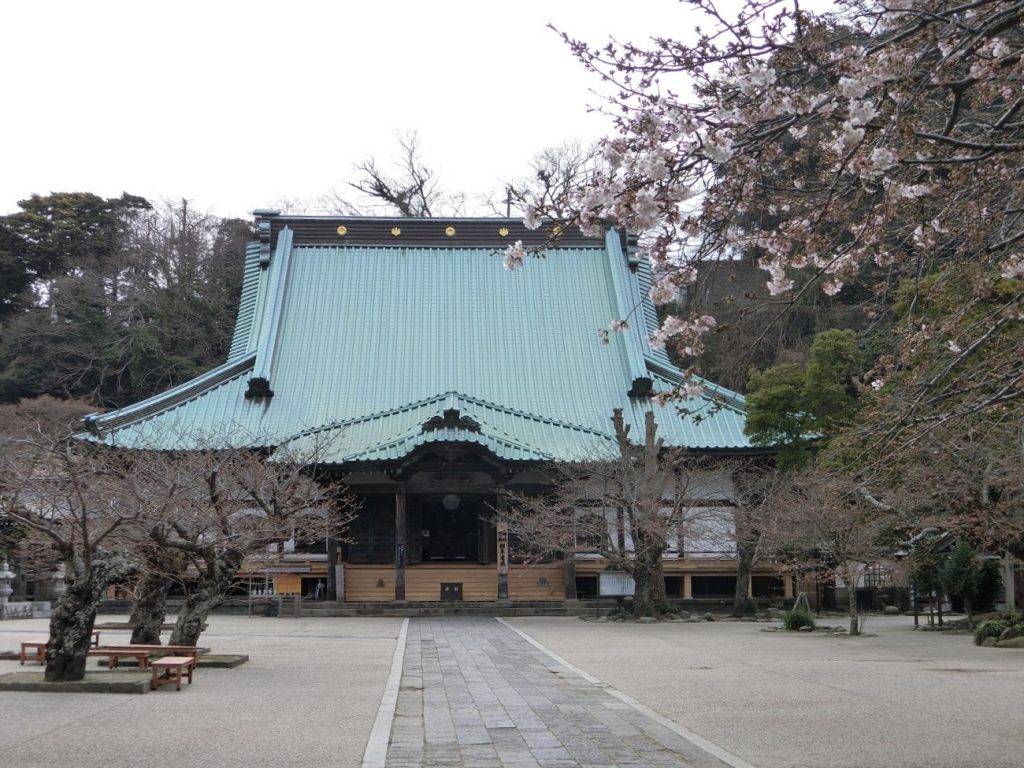
The main pagoda has probably the biggest roof of all the temples in Kamakura. It can be clearly seen from all the way across the bay. The main pagoda features an elevated walkway which will take you all the way around the structure. To the right of the main pagoda is a stone garden, with intricate patterns raked into the gravel. To the left is a more traditional Japanese style garden complete with a pond filled with lotus plants and turtles, and an elegant Chinese style pagoda on the hillside behind the garden. The bridge connecting the main pagoda to the Founder’s Hall is a great spot from which to take pictures of this garden.
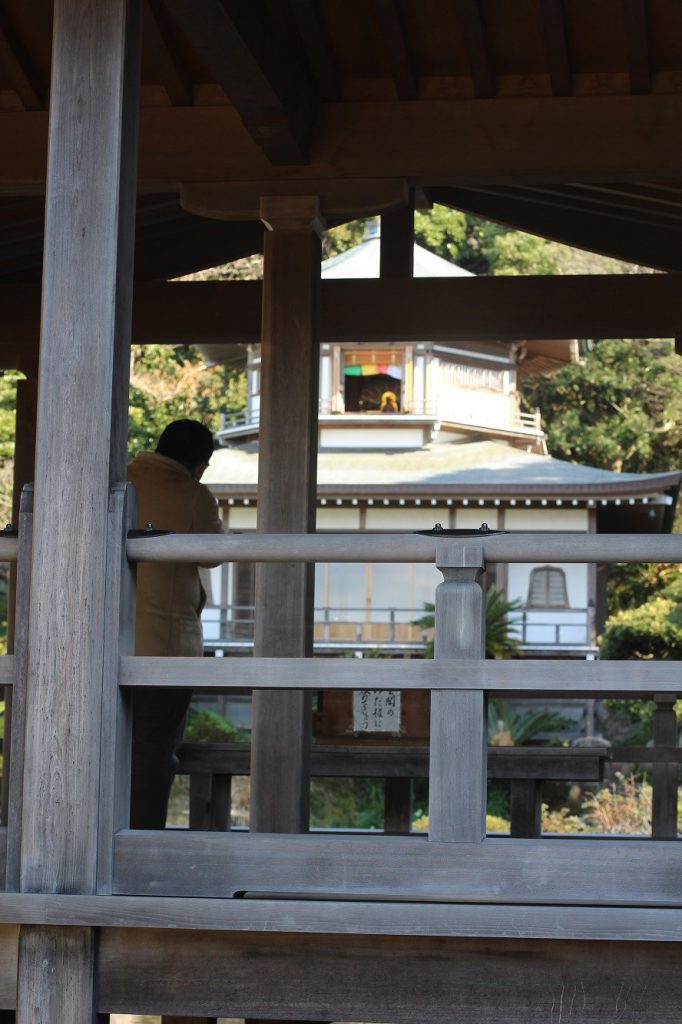
Off to the right of the main pagoda is a kindergarten (which is where as a kid I learned how to ride a bicycle). Between the kindergarten fence and the wall surrounding the rock garden is a walkway. Take the walkway as it curves behind the main pagoda, past the small shrine, and up some steps. The steps will take you to a lovely vista spot overlooking Kamakura Bay. There are two elevated platforms for taking in the view. Looking beyond the Komyoji main pagoda roof, one can see Inamuragasaki, Enoshima, and if lucky, Mount Fuji. This spot is designated as one of Kanagawa Prefecture’s 50 Best Vista Points. Here’s a picture I took, unfortunately on a cloudy day so no Mt. Fuji.
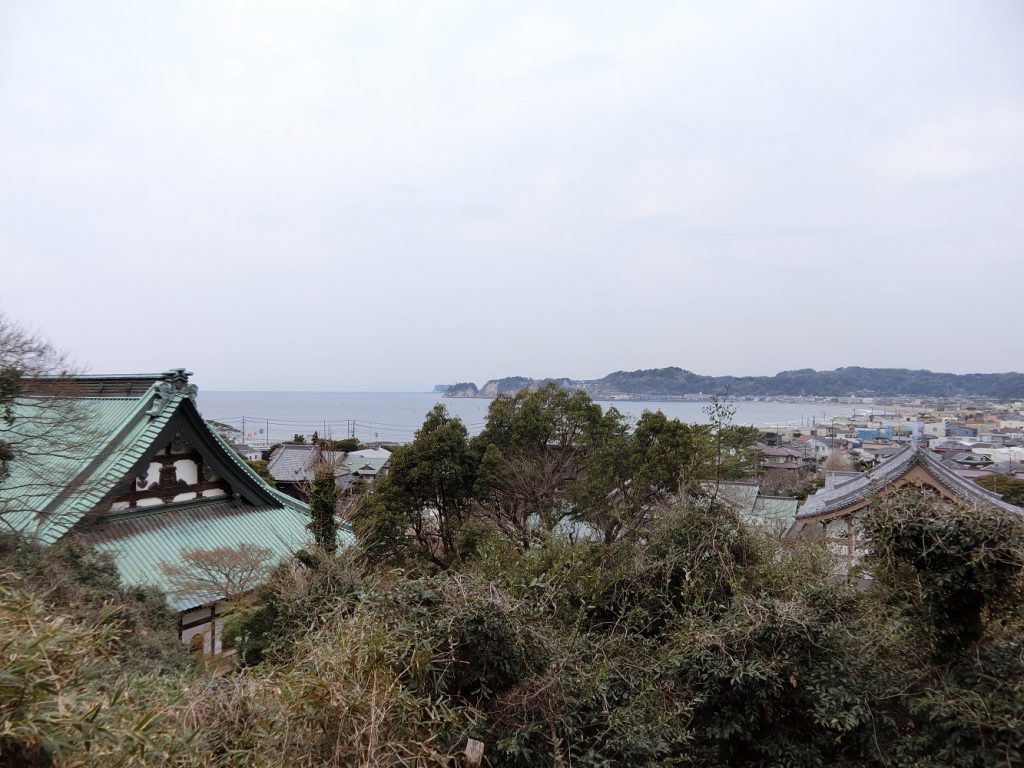
Instead of going back down the steps, it’s worth taking the road leading past the middle school and downhill through a tunnel/rock shed. About 50 meters past the rock shed exit, you’ll see a small graveyard on your right. The graveyard has a bunch of HUGE tombstones. Someone once told me the graveyard is nicknamed “Borobudur of Kamakura” because of them Anyway, the huge tombstones belong to the successive heads of the Naito Clan of Hyuga Province, which roughly corresponds with modern day Miyazaki Prefecture on the Pacific coast of Kyushu. Why their graves are located so far away from the fiefdom capitol of Nobeoka I haven’t a clue.
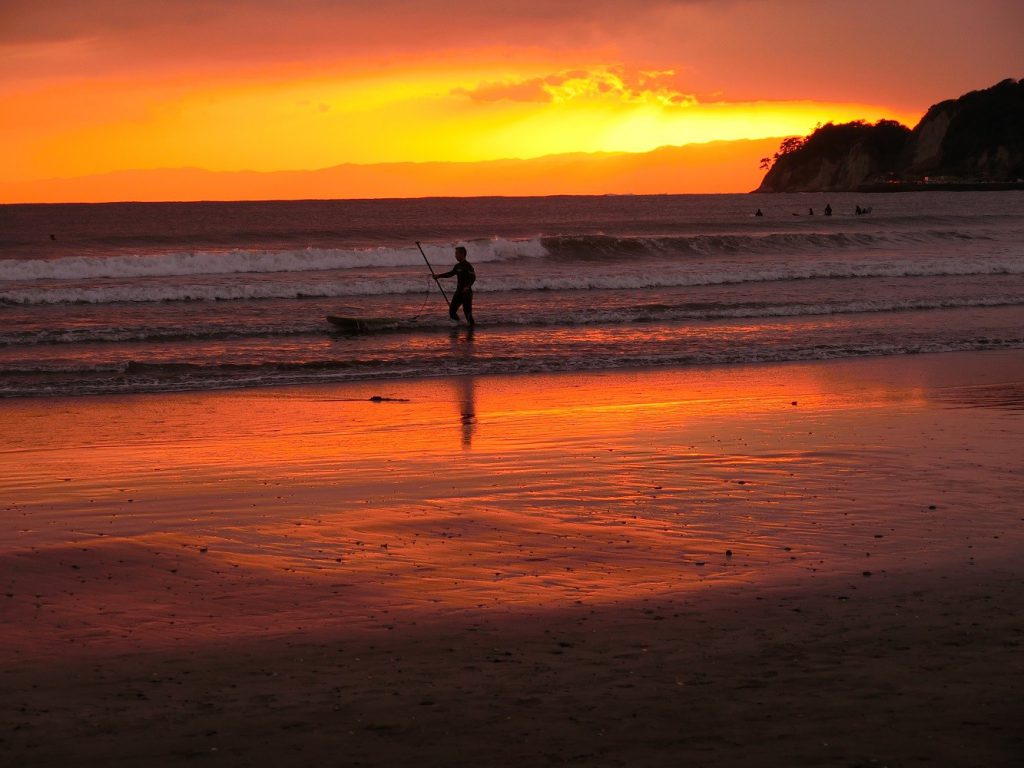
Continue down the hillside road until it comes to a “T.” Turn right and go downhill to the next diagonal intersection. Turn acutely left. From underneath the highway overpass you can access Zaimokuza Beach, and a raised sidewalk along the beach. Either is a pleasant walk.
Finally, Komyoji also offers an opportunity to sample shojin ryori (Buddhist vegetarian fare) lunches. These sessions are booked well in advance, so call the temple a month or so before you visit.
0467-22-0603.
There is a website, but unfortunately, it’s all in Japanese
